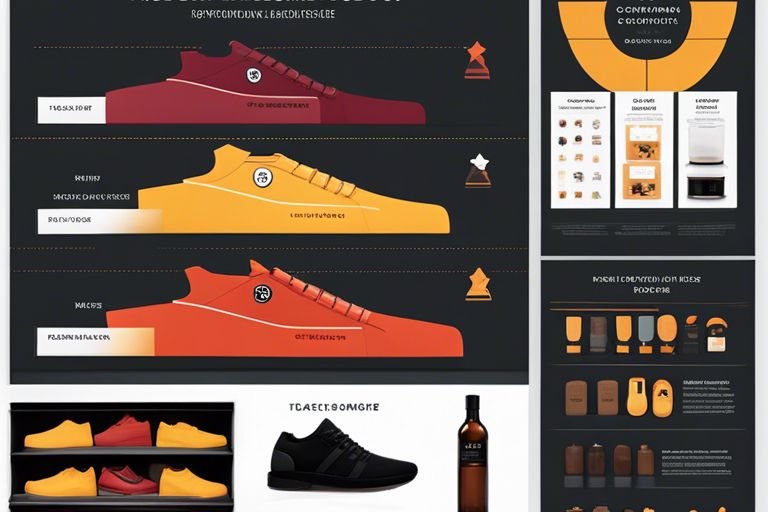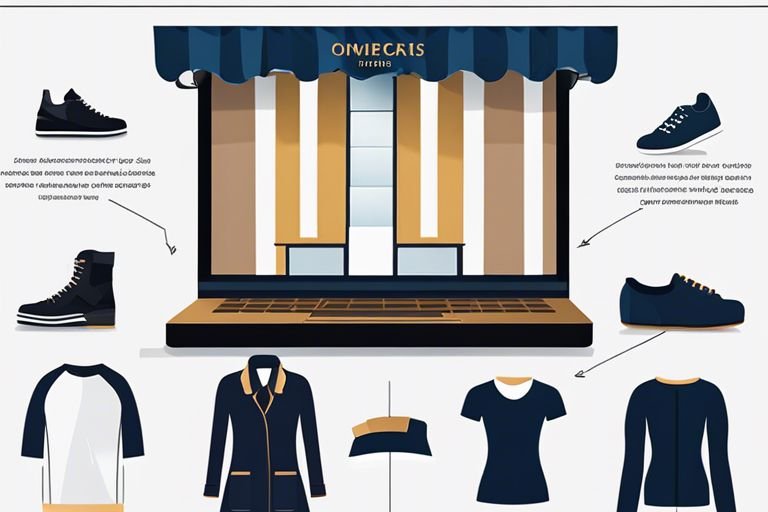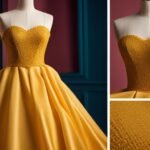In the matter of running a successful ecommerce store, product images play a crucial role in attracting customers and driving sales. You need to ensure that your product images are not only visually appealing but also provide all the necessary information customers need to make a purchase decision. In this guide, we will walk you through the 8 crucial types of product images that every ecommerce store needs to optimize their online presence and increase conversions.
Key Takeaways:
- High-Quality Product Images: Create clear, high-resolution images that show your products from different angles to give customers a detailed view of what they are purchasing.
- Lifestyle Images: Include lifestyle images that showcase your products in real-life scenarios to help customers envision themselves using the product.
- Detail Shots: Capture close-up images of specific features or textures of your products to highlight their quality and unique selling points.
1. The Hero Image: Your Product’s Best Foot Forward
What Defines a Hero Image?
If you’ve ever shopped online, you know the impact of a striking hero image. It is the first impression your customers have of your product, setting the tone for their overall shopping experience. A hero image is the main product photo that showcases your item in its best light, capturing the attention of your potential buyers. Think of it as the window display of a brick-and-mortar store, drawing people in with its visual appeal.
Tips for Capturing the Perfect Hero Image
While capturing a hero image may seem straightforward, there are key strategies to keep in mind to ensure you’re presenting your product in the best possible way. Pay attention to lighting, angles, and background to showcase your product effectively. Keep in mind, the hero image should be clear, high-quality, and visually appealing to entice customers to explore further.
- Use natural lighting to avoid harsh shadows and bring out the true colors of your product.
- Experiment with different angles to highlight unique features and create visual interest.
- Choose a simple background that doesn’t distract from the product itself.
Capturing the perfect hero image requires attention to detail and a focus on presenting your product in the best possible light. By following these tips, you can create a visually appealing and impactful image that will help drive sales and engage customers.
- Quality is key when it comes to hero images, as they are often the first point of contact for potential customers.
- Remember to focus on the product and avoid clutter or distractions in the background.
For instance, if you’re selling clothing, consider using a model to showcase how the item fits and looks in real life. This can help customers visualize themselves wearing the product, increasing the likelihood of a purchase. The hero image is a powerful tool in your ecommerce arsenal, so make sure to use it wisely to make a lasting impression.
2. The White Background Image: Clean and Professional
Benefits of White Background Photography
White background photography offers a clean and professional look to your product images. By using a stark white backdrop, you can create a consistent and cohesive visual style across all your product photos, which can help establish brand recognition and trust with your customers. This minimalistic approach allows your products to stand out, without any distractions, emphasizing their features and details.
Step-by-Step Guide to White Background Image Creation
Even with little to no photography experience, creating white background images for your ecommerce store is achievable. Follow these simple steps to get started:
| Step 1: Set up your lighting | Step 2: Position your product |
| Make sure your lighting is even and bright to eliminate any shadows on the white backdrop. | Place your product in the center of the backdrop and adjust as needed. |
Photography plays a crucial role in the success of your ecommerce store. With the rise of online shopping, high-quality product images are crucial for attracting customers and driving conversions. Investing time and effort into creating professional white background images can set your products apart from the competition and elevate your brand image.

3. The Lifestyle Image: Contextualizing Your Product
Now, in the world of ecommerce, where competition is fierce and first impressions are crucial, lifestyle images play a vital role in helping your products stand out. These images provide a visual context for your products, showing them in real-life situations or settings that resonate with your target audience.
Crafting Images That Reflect Lifestyle Association
Association is key when creating lifestyle images for your ecommerce store. The goal is to showcase your products in a way that resonates with your ideal customer’s lifestyle, values, and aspirations. By incorporating elements like props, backgrounds, and models that reflect your target audience’s interests, you can create a strong emotional connection that drives engagement and sales.
Factors to Consider When Creating Lifestyle Images
- Target Audience: Understand who your target audience is and what appeals to them.
- Brand Identity: Ensure that your lifestyle images align with your brand’s tone and aesthetics.
- Setting: Choose settings that complement your products and enhance their features.
Knowing your target audience and aligning your lifestyle images with your brand identity are crucial for creating impactful visuals that resonate with your customers.
The Essential Guide – 8 Types Of Product Images Every Ecommerce Store Needs
4. The Scale Image: Providing a Sense of Size
After Ultimate Guide Best Practices for eCommerce Product …, it’s evident that accurately conveying the size of products through images is crucial for an ecommerce store’s success. Customers rely heavily on visuals to determine the dimensions of a product and make informed purchasing decisions. Utilizing scale images is an effective way to provide a sense of size to online shoppers.
How to Accurately Convey Product Size Through Images
An crucial aspect of showcasing product size through images is to include reference points that customers can easily relate to, such as a person, a common object (like a coin), or measurements displayed alongside the product. Make sure the scale is accurate and consistent across all product images to avoid any confusion or misinterpretation by customers.
Pros and Cons of Different Scale Image Techniques
Little discrepancies in conveying product size can lead to customer dissatisfaction and increase the likelihood of returns. Using various techniques to showcase product size has its own set of pros and cons. Below is a breakdown of the most important pros and cons of different scale image techniques:
| Technique | Pros and Cons |
| 1. Person for Scale | Provides a relatable reference point for size comparison, but may vary in height and build. |
| 2. Common Object | Offers a universal comparison but may not accurately represent the dimensions of the product. |
| 3. Measurements | Precisely conveys the size of the product, but customers may struggle to visualize the actual dimensions. |
Size plays a critical role in the online shopping experience. Ensuring that customers have a clear understanding of the dimensions of a product can prevent misunderstandings and instill confidence in their purchase. By carefully selecting and implementing scale image techniques, ecommerce stores can positively impact their conversion rates and reduce the likelihood of product returns.
5. The Detail Shot: Highlighting Product Quality
For ecommerce stores looking to showcase the quality and craftsmanship of their products, the detail shot is an vital tool. This type of image allows customers to zoom in and see the intricate features and fine details that set your product apart from the competition. Whether it’s the stitching on a leather bag, the texture of a fabric, or the clarity of gemstones in jewelry, the detail shot brings these elements to the forefront, helping potential buyers make informed purchasing decisions.
Tips for Capturing the Fine Details of Your Product
- Use a macro lens to capture small details with sharp clarity
- Ensure proper lighting to highlight textures and intricate features
- Focus on unique selling points like craftsmanship or material quality
- Avoid clutter in the background to keep the focus on the product
Detail shots are particularly effective when you want to emphasize the quality and design of your product.
Perceiving the fine details can create a sense of value and luxury, enticing customers to make a purchase based on the meticulous attention to craftsmanship and design.
When to Use Detail Shots for Maximum Impact
Shot in the right context, detail shots can elevate the perceived value of your products and set them apart from competitors.
Detail shots are especially effective for products where the quality of materials or craftsmanship is a key selling point. Capturing these elements can help build trust with customers and showcase the level of care that goes into each product.
Capturing the fine details through close-up shots is vital for products where quality is paramount. Whether it’s a hand-stitched detail on a garment or the intricate pattern on a piece of jewelry, these shots can make a significant impact on how customers perceive the value and desirability of your products.

6. The Group Shot: Showcasing Range
Composing Group Shots That Tell a Story
Story Group shots are a powerful way to showcase your range of products and tell a visual story to your customers. By grouping multiple products together in one image, you can demonstrate the variety of options available and create a visually appealing display that captures the attention of shoppers.
Step-by-Step Process for Organizing Group Product Images
Process Creating effective group shots requires careful planning and organization. Here is a step-by-step process to help you organize your group product images:
| Step | Description |
| Gather Products | Collect all the products you want to include in the group shot. |
| Arrange Products | Experiment with different layouts and compositions to find the most visually appealing arrangement. |
| Lighting | Ensure proper lighting to highlight each product effectively. |
| Take Multiple Shots | Capture several images from different angles to ensure you have options to choose from. |
| Edit Images | Use photo editing tools to enhance the group shot and make any necessary adjustments. |
Another By following this process, you can create compelling group product images that showcase your range effectively and attract customers to explore your offerings further. Remember to pay attention to details such as composition, lighting, and editing to ensure your group shots are visually appealing and engaging.
7. The Packaging Shot: The First Impression
Why the Packaging Shot Matters
The packaging of your goods is what a customer sees when they get their order. It sets the tone for their entire experience with your brand. A well-crafted packaging shot can instantly grab the attention of potential buyers and convey the quality and care you put into your products. On the other hand, a dull or uninspiring packaging shot could make your product look unappealing and lead to lost sales.
Creating a Compelling Image of Your Product’s Packaging
Any successful ecommerce store knows the importance of creating a compelling image of their product’s packaging. The image should accurately represent the actual packaging and showcase it in the best light possible. Make sure the colors are vibrant, the text is legible, and the overall design is visually appealing. Consider including different angles or close-up shots to give customers a detailed look at what they can expect.
Understanding the impact of a packaging shot on your ecommerce store cannot be overstated. It is the first impression customers will have of your product, so it is crucial to make it count. Little details like the quality of the packaging materials, the branding, and how well the product is protected can make a big difference in how your product is perceived. Investing time and effort into capturing the perfect packaging shot can pay off in increased sales and customer satisfaction.
8. The Interactive Image: Engaging the Customer
The Evolution and Importance of Interactive Images
If you want to truly captivate your customers and set your ecommerce store apart from the competition, interactive images are the way to go. Gone are the days of static product photos – today’s consumers crave a more immersive shopping experience. Interactive images allow customers to engage with your products in a more dynamic way, leading to increased time spent on your site and ultimately, higher conversion rates.
Crafting Images That Encourage Customer Interaction
An effective interactive image should go beyond just showcasing a product from different angles. It should encourage customers to interact with the image, whether that’s by zooming in for a closer look, rotating the product to view it from all sides, or even trying out different color options. By giving customers the ability to interact with your products in this way, you’re creating a more engaging and enjoyable shopping experience that is sure to leave a lasting impression.
Importance: Interactive images not only provide customers with a more immersive shopping experience but also help in reducing returns and increasing customer satisfaction. By allowing customers to interact with products before purchasing, you’re reducing the likelihood of buyers’ remorse and ensuring that they know exactly what they’re getting. This transparency builds trust and loyalty with your brand, ultimately leading to repeat purchases and positive word-of-mouth recommendations.
(Extra Tips) The User-Generated Image: Authentic Advocacy
Leveraging User-Generated Content to Build Trust
Not all product images need to be professionally curated. In fact, user-generated images can be a powerful tool in your ecommerce arsenal. Authenticity and trust are increased when potential buyers witness actual individuals using and appreciating your items. User-generated content serves as social proof, demonstrating the favorable experiences that other people have had with your company.
Tips on How to Encourage and Utilize User-Generated Images
To encourage customers to share their experiences, create engaging hashtags that they can use when posting about your products on social media. Offer incentives such as discounts or giveaways for those who share their images. Make it easy for customers to tag your brand by including your handle on packaging or in product manuals.
- Engage with customers: Respond to comments and messages from users who share their images to show appreciation.
- Feature user images: Showcase user-generated content on your website and social media to encourage more customers to participate.
- Ask for permission: Always get permission before sharing a customer’s image to respect their privacy and rights. Assume that not everyone will want their content shared publicly.
While leveraging user-generated images can significantly boost your brand’s credibility, it is crucial to build and maintain a respectful relationship with your customers. Always prioritize their privacy and preferences when using their content. Encourage a positive community where customers feel valued and heard.
Conclusion
With these considerations in mind, incorporating the 8 types of product images discussed in this guide can elevate the overall shopping experience for your customers and boost your ecommerce store’s success. From high-quality solo shots and lifestyle images to detailed close-ups and infographics, each type serves a specific purpose in showcasing your products effectively and driving conversions. By implementing a strategic blend of these image types, you can provide a comprehensive view of your products and build trust with your audience.
Keep in mind, consistency and quality are key when it comes to product imagery. Invest time and resources into creating visually appealing and informative images that accurately represent your products. By following the guidelines outlined in this guide, you can set your ecommerce store apart from the competition and make a lasting impression on your customers.
FAQ
Why do I need different types of product images for my ecommerce store?
A: Different types of product images serve different purposes in helping potential customers make informed decisions. By incorporating a variety of images, you can showcase your products from multiple angles, highlight key features, and provide a better overall visual representation for customers.
What are the 8 types of product images every ecommerce store needs?
A: The crucial types of product images include:
1. White Background Images
2. Lifestyle Images
3. Infographic Images
4. Scale Comparison Images
5. 360-Degree Images
6. Detail Shots
7. User-Generated Images
8. Video Content
How can these different types of product images enhance my ecommerce store?
A: By incorporating a diverse range of product images, you can increase customer engagement, build trust, and provide a comprehensive view of your products. This can lead to higher conversion rates, reduced return rates, and an overall improved shopping experience for your customers.






does fitspresso work
March 17, 2024Your posts always leave me feeling motivated and empowered You have a gift for inspiring others and it’s evident in your writing
Tanya Lyons
March 20, 2024Its like you read my mind! You appear to know so much about this, like you wrote the book in it or something. I think that you can do with a few pics to drive the message home a little bit, but other than that, this is fantastic blog. A great read. I’ll certainly be back.
Claudia Kim
March 20, 2024I just could not leave your web site before suggesting that I really enjoyed the standard information a person supply to your visitors? Is gonna be again steadily in order to check up on new posts.
Arlie Erdman
March 27, 2024Wow wonderful blog layout How long have you been blogging for you make blogging look easy The overall look of your site is great as well as the content
mobily site
May 11, 2024I admire the originality in this piece.